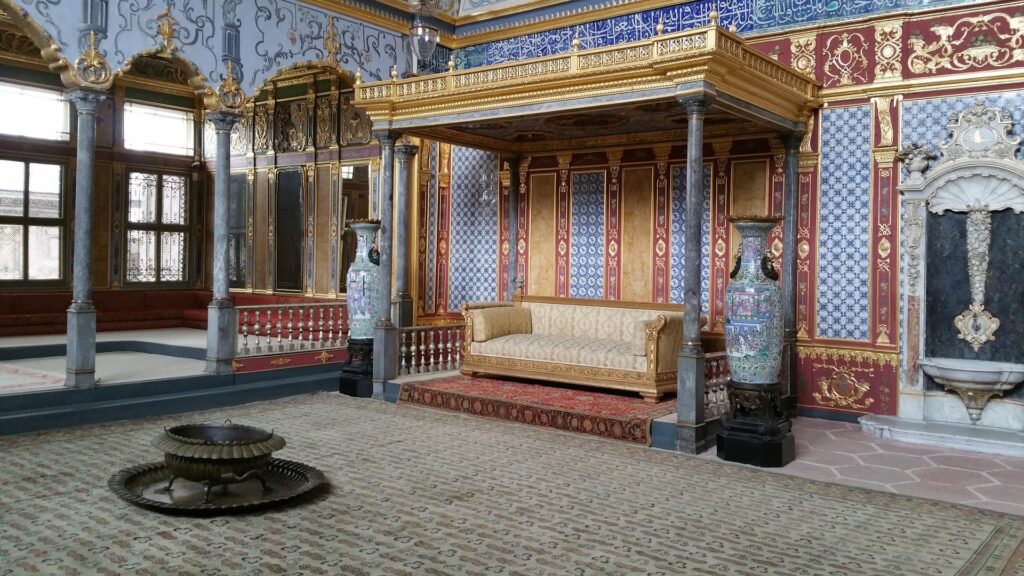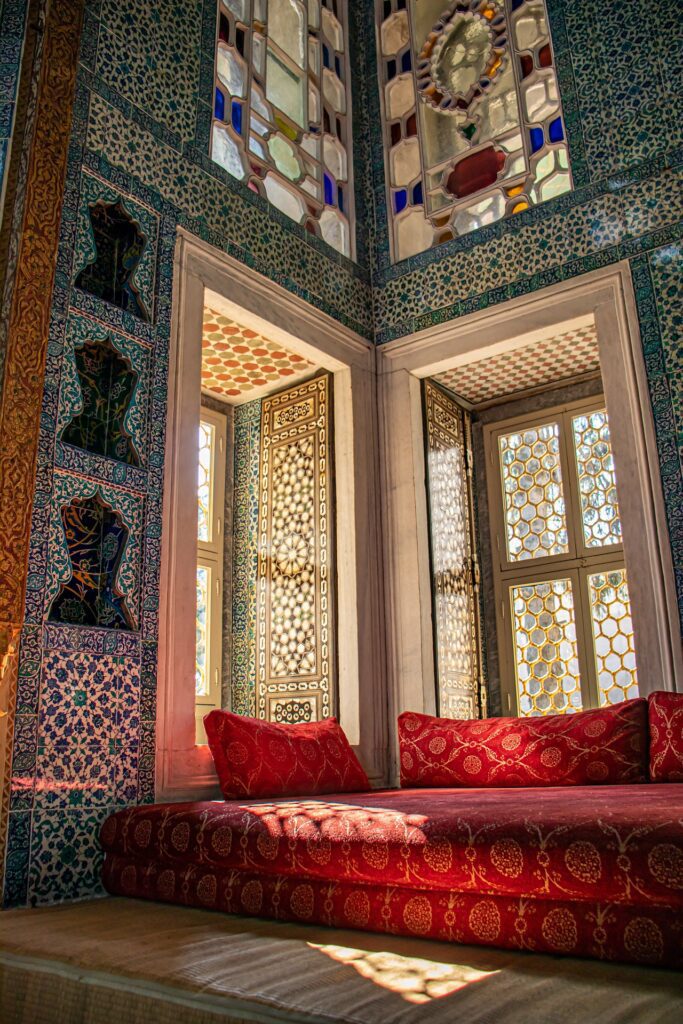Secrets of Topkapi Palace
Secrets of Topkapi Palace – Topkapi Palace has more colorful stories than most of the world’s royal residences combined. It was at Selim le Sot’s, who had drowned after drinking too much champagne; İbrahim the mad, who lost his mind after being imprisoned for 22 years by his brother Murat IV; and the malicious Roxelana, former concubine who became the powerful husband of Süleyman the Magnificent.

These three are just a few of the mad and sad Ottomans who lived here between 1465 and 1830. You will find extravagant vestiges of their centuries of madness, intrigue, excess and war everywhere. You will see vast manicured gardens which were once lit by candles mounted on the backs of turtles, superb pavilions inlaid with tiles where royal circumcisions were practiced and golden observation platforms where the sultans looked at the golden horn (Haliç) and perhaps regretted their sequestered lifestyles. Here, great combat victories have been celebrated with lavish banquets chaired by the Sultan. Discover Topkapi Palace Contemporary stories written by overly amazed foreign dignitaries marveled at the legendary palace staff of black eunuchs, famous musicians and elegant purpose-built pavilions. The palace collections are no less impressive. Begun by Mehmet the Conqueror, they were extended by a succession of sultans as interested in philosophy and the arts as in conquest and concubine.

Sparkling treasures from all over the empire are kept at the Trésor, which houses the dagger encrusted with jewels, the object of desire in the 1964 film, Topkapi. Lavish costumes are on display in the Expeditionary’s dormitory, important Islamic relics are stored in the sacred security rooms, and fine examples of calligraphy and Ottoman portraits are displayed in the pages quarters responsible for the sacred security rooms. However, if time is short, head straight to the magnificent imperial harem with magnificent architecture. By the way, it’s easy to forget that women have spent their whole lives here behind bars. In other words, they live a long time – according to legend, the harem of 280 women of Ibrahim the Madman was tied up in bags and thrown into the Bosphorus when he got tired of it.

According to popular belief, the harem was a place where the sultan could indulge in debauchery as he pleased (and Murat III had, after all, had 112 children!). In reality, these were the imperial family quarters and every detail of the life of the harem was governed by tradition, obligation and ceremony. The word “harem” literally means “private”. The women of the Topkapı harem must have been foreigners, Islam prohibiting the enslavement of Muslims. Girls were bought as slaves (often after being sold at a good price by their parents) or received as gifts by nobles and potentates.
Upon entering the harem, the girls would be introduced to Islam and Turkish culture and language, as well as the arts of make-up, dress, behavior, music, reading and reading. writing, embroidery and dancing. They then entered the meritocracy, first as ladies-in-waiting of the concubines and children of the sultan, then of the sultan’s mother and finally – if they demonstrated sufficient aptitudes and were quite beautiful – of the sultan himself.

Governing the Harem was the able sultan. She often owned large land holdings in her name and controlled them through black eunuch servants. Able to give orders directly to the grand vizier, his influence over the sultan, over the choice of his wives and concubines and over matters of state was often profound.
Islamic law authorized the Sultan to have four legitimate wives, who were given the title of kadın (wife). He could have as many concubines as he could handle – some had up to 300, although not all of them were in the Harem at the same time. If a sultan’s wife gave him a son, she was called haseki sultan; haseki kadın if it was a girl. The Ottoman dynasty did not observe a primogeniture (the first son’s right to the throne), so that in principle the throne was available to any imperial son. Each lady in the Harem had difficulty proclaiming her son heir to the throne, which would ensure her role as a new valid sultan.
Highlights of any visit to the Harem include the narrow courtyard of the black eunuchs, the kiosk of Sultan Ahmet, the court of concubines and consorts of the Sultan, the quarters of the Valt Sultan, the private room decorated with Murat III and the double kiosk / apartments of the crown prince.

Unknown Secrets of Harem Life
- The concept of the Harem has provoked much speculation. Curiosity about the unknown and inaccessible inspired highly imaginative literature among the people of the western world.
- The word Harem which in Arabic means “forbidden” refers to the private sector of a Moslem household in which women live and work.
- The word Harem is also used for women dwelling there.
- In traditional Moslem society the privacy of the household was universally observed and respectable women did not socialize with men to whom they were not married or related.
- Because the establishment of a formal Harem was an expense beyond the means of the poor, the practice was limited to elite groups, usually in urban settings.
- Since Islamic law allowed Moslems to have a maximum of four wives, in a Harem there would be up to four wives and numerous concubines and servants.
- Having a harem, in general, was traditionally a mark of wealth and power.
- The Sultan’s daily life was very simple. In addition to regular daily activities, in order to broaden their perspectives, sultans brought scholars, poets, artists and historians to the palace.
- Most of the sultans in the Ottoman Empire encouraged these skills and developed many skills themselves. They commissioned new works, manuscripts and bindings, were ardent readers, competent calligraphers, poets, archers, riders, javelin players, hunters, composers, etc.
- In daily life at the palace, silence was dominant. The hundreds of people in the palace tried not to meet the sultan unless necessary. In attempting to keep their voices down, it was even said that people of the court sometimes developed a system of body language among themselves.










